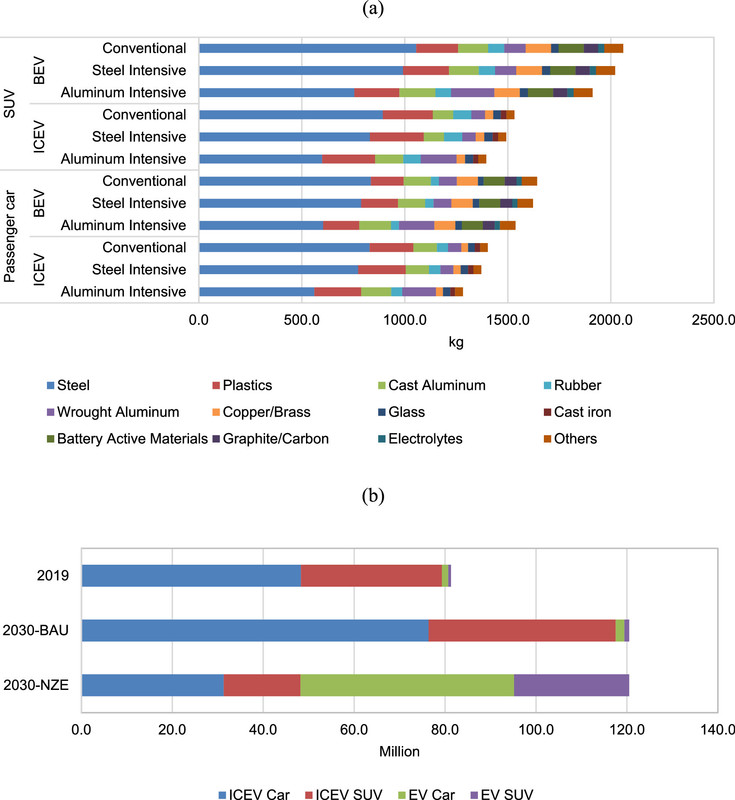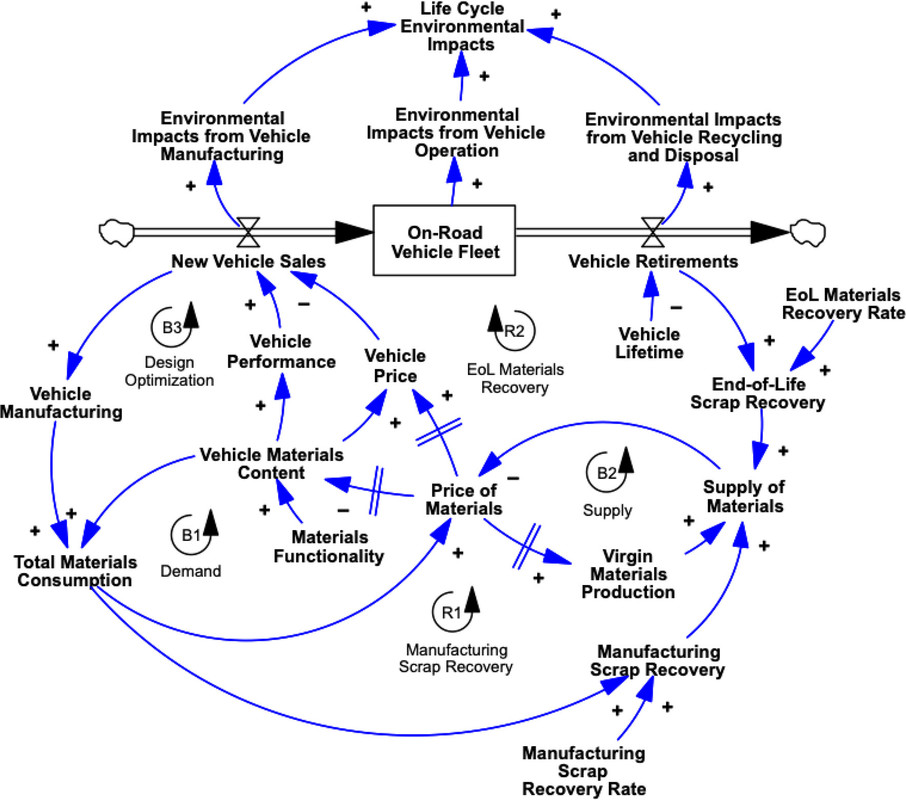Science
Related: About this forumA Sober Look at the Materials Implications of Electric Cars.
The paper to which I'll refer in this post is this one: Materials Challenges in the Electric Vehicle Transition Di He, David R. Keith, Hyung Chul Kim, Robert De Kleine, James Anderson, and Matthew Doolan Environmental Science & Technology 2024 58 (28), 12297-12303.
There's that swell word thrown around about (energy) "transitions" as if any of them have had any effect on the rapidly acceleration of
concentrations of the dangerous fossil fuel waste CO2. They have not. Things are getting worse faster than ever:
Update on the Disastrous 2024 CO2 Data Recorded at Mauna Loa
There seems to be a belief that a three card monte game, where we pretend that energy comes from some magical source (usually the thermodynamically degraded form of energy, electricity) that is labeled (most often dishonestly) as "green." Examples of things advertised as "green" are things that represent energy storage, for example, batteries and hydrogen, although as I often point out, according to the inviolable laws of thermodynamics, storing energy wastes it, and thus requires more energy than simply using primary energy directly. A caveat concerns the case of capturing exergy that is otherwise waste energy, but overall the potential of such an approach is limited.
The extent to which electricity is "green," is a function of how it's made. As of 2024, after decades of caterwauling and carrying on, in most places electricity is made by combusting dangerous fossil fuels, destroying exergy by converting the heat to mechanical energy and then to electrical energy with the dangerous fossil fuel waste being dumped directly into the planetary atmosphere.
This has implications for electric cars, which do have an operational carbon cost, as well as a significant carbon cost related to the embodied energy of manufacture.
Not so long ago, I commented on a paper that discussed the carbon cost of various kinds of electric, plugin hybrid, hybrid, and internal combustion cars on the grid where I live, the PJM grid: A paper addressing the idea that electric cars are "green.". It showed, that where I live, the type of car I drive, a straight up hybrid with no connection to the electric grid was the least dirty in terms of carbon cost because of the dependence of my grid on dangerous fossil fuel combustion. Note "least dirty," not "green."
The current paper refers simply to embodied cost, not so much about energy, but rather about materials:
From the paper's introduction:
The EV transition will impact the use of a broad range of materials throughout the vehicle. The metals composition of the EV battery has been a topic of increasing concern, with global demand for lithium used in Li-ion batteries (LIBs) projected to increase 6-fold from 2022 to 2030, (5) resulting in significant recent volatility in lithium prices. (6) In 2022, it was reported that nickel and cobalt consumption for EV battery production tripled since 2019. (5) Nonetheless, the changes that will occur in the rest of the vehicle are also important. Electrification involves redesigning the vehicle drivetrain and control systems, requiring materials different from those used in the manufacturing of ICE equivalents. Engines are made primarily of cast iron/aluminum, while electric motors contain increased amounts of steel, copper, and rare earth elements. (7) Moreover, the body structure of future battery electric vehicles (BEVs) will likely have different material compositions than ICEVs due to the increased need for lightweighting to extend vehicle range. (8) Yet, the impacts associated with vehicle body materials have received less attention than battery materials to date from researchers and industry analysts...
...In North America, the automotive sector plays a crucial role as a supplier of steel scrap, contributing to 18–23% of total recycled steel supply. (9,10) If new vehicles entering the on-road fleet contain more alternative lightweight materials and less steel, the supply of recycled steel from retired vehicles will reduce. This change would occur over several decades as the on-road fleet gradually turns over and vehicle material composition slowly evolves. With changing availability and use of recycled materials, the sustainability of nonautomotive sectors including energy consumption and life cycle greenhouse gas emissions will change, creating questions about how these changes in sectorial sustainability performance contribute to meeting the climate goals that led to the introduction of EV policies in the first place...
...We argue that a new, dynamic approach to understanding the material impacts of the EV transition is needed that endogenously accounts for the changing vehicle design choices, the impact on the materials composition of the vehicle, and the subsequent impacts for materials markets, consumer vehicle preferences, and the environmental performance of the vehicle fleet...
The authors look at materials flows and implications for this magical "electrical car transition," and the effect on whether it is really, as is generally assumed, "green."
Some graphics from the paper:

The caption:

The caption:

The caption:
The authors speculate that careful consideration of materials needs to be on the table as they make the glib assumption that we can and should build one billion electric cars. (I shudder at the thought myself.)
They describe the reason for doing so as follows:
Like most of these shell games, this statement, in my view, is removed from the realities of how electricity is generated. Even if there were enough matter and mines on the planet to engineer this "transition" and the more delusional hype about the "energy transition," we are, overall, largely clueless about how to make clean electricity, since the popular reactionary enthusiasm is for tearing the shit out of wilderness for wind and solar junk all of which will be landfill 20 to 30 years after its built. It hasn't worked; it isn't working, and it won't work. The question is not whether we know how to make batteries or how to waste energy with water electrolysis and make global heating even worse. The question is one of primary energy.
I trust you had a pleasant weekend.
Lulu KC
(4,290 posts)I scrolled down to your synopsis and will read the rest later--but yes. That's the obstacle. Argh.
hunter
(38,952 posts)It's not just the cars but all the infrastructure required to support them -- the roads, the highways, the parking lots, traffic enforcement, insurance, etc..
Forget automobiles. We ought to be turning our cities into attractive affordable places where car ownership is unnecessary.
I've been thinking about how we might break our automobile addiction.
Maybe we could offer a free house in the city to every high school graduate. If they stay there for five years, full time, don't buy a car, then the house is theirs, they own it. We could offer the same deal to senior citizens. We could put them to work rebuilding our cities.
I'm not talking about ugly tower blocks, but something entirely traditional in human history, more like small apartments in two or three story houses on narrow mixed-use streets.
The first home my wife and I bought was $8,000, which was maybe $20,000 in today's money. It was in a "rust belt" city where you could buy a house for a dollar if you could prove you had the resources to make it habitable. We had a baby on the way so we wanted something move-in ready, which is why we passed on the one dollar homes. We had the skills and the resources to refurbish a one dollar house, and we'd both lived as renters in worse neighborhoods, we just didn't want to do it with a newborn baby. My grandma paid part of that.
Every young person should have similar opportunities.
People complain about "free stuff" but the children of upper middle class and wealthy people get all sorts of help from their families. Too many of them later claim they pulled themselves up by their own bootstraps.